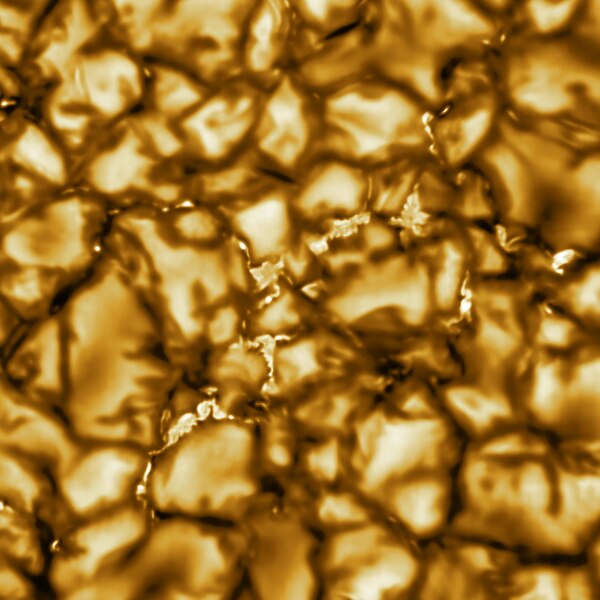File:Daniel K. Inouye Solar Telescope highest resolution image of the Sun’s surface - Crop image full.tif
Vai alla navigazione
Vai alla ricerca

Dimensioni di questa anteprima JPG per questo file TIF: 600 × 600 pixel. Altre risoluzioni: 240 × 240 pixel | 480 × 480 pixel | 768 × 768 pixel | 1 024 × 1 024 pixel | 1 640 × 1 640 pixel.
File originale (1 640 × 1 640 pixel, dimensione del file: 15,42 MB, tipo MIME: image/tiff)
Cronologia del file
Fare clic su un gruppo data/ora per vedere il file come si presentava nel momento indicato.
| Data/Ora | Miniatura | Dimensioni | Utente | Commento | |
|---|---|---|---|---|---|
| attuale | 01:48, 31 gen 2020 |  | 1 640 × 1 640 (15,42 MB) | Fabian RRRR | {{Information |description ={{en|1=Caption: The Daniel K. Inouye Solar Telescope has produced the highest resolution image of the Sun’s surface ever taken. In this picture taken at 789nm, we can see features as small as 30km (18 miles) in size for the first time ever. The image shows a pattern of turbulent, “boiling” gas that covers the entire sun. The cell-like structures – each about the size of Texas – are the signature of violent motions that transport heat from the inside of the sun t... |
Pagine che usano questo file
La seguente pagina usa questo file:
Utilizzo globale del file
Anche i seguenti wiki usano questo file:
- Usato nelle seguenti pagine di ar.wikipedia.org:
- Usato nelle seguenti pagine di de.wikipedia.org:
- Usato nelle seguenti pagine di ro.wikipedia.org:
